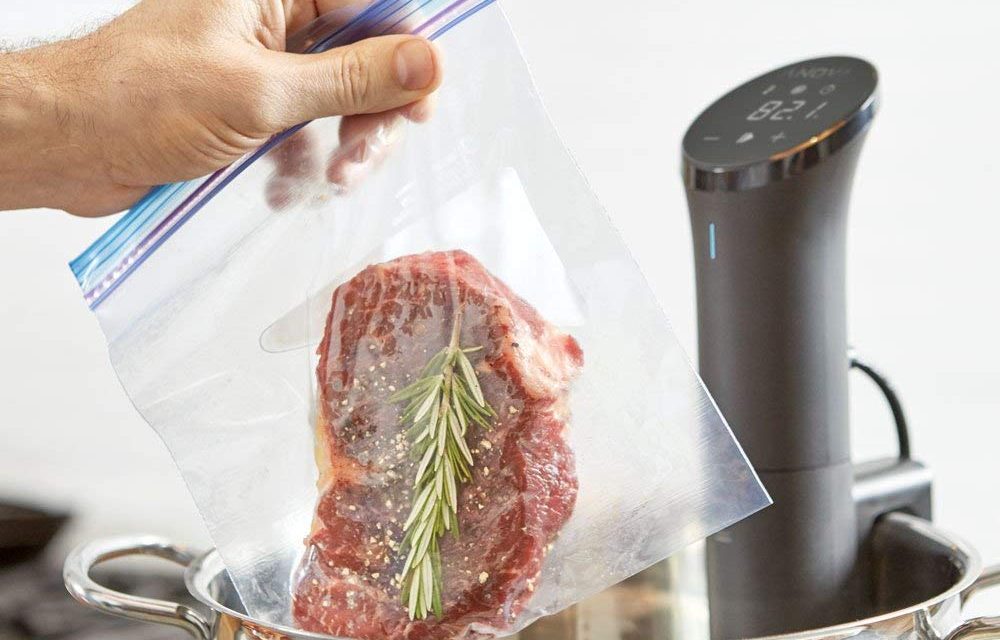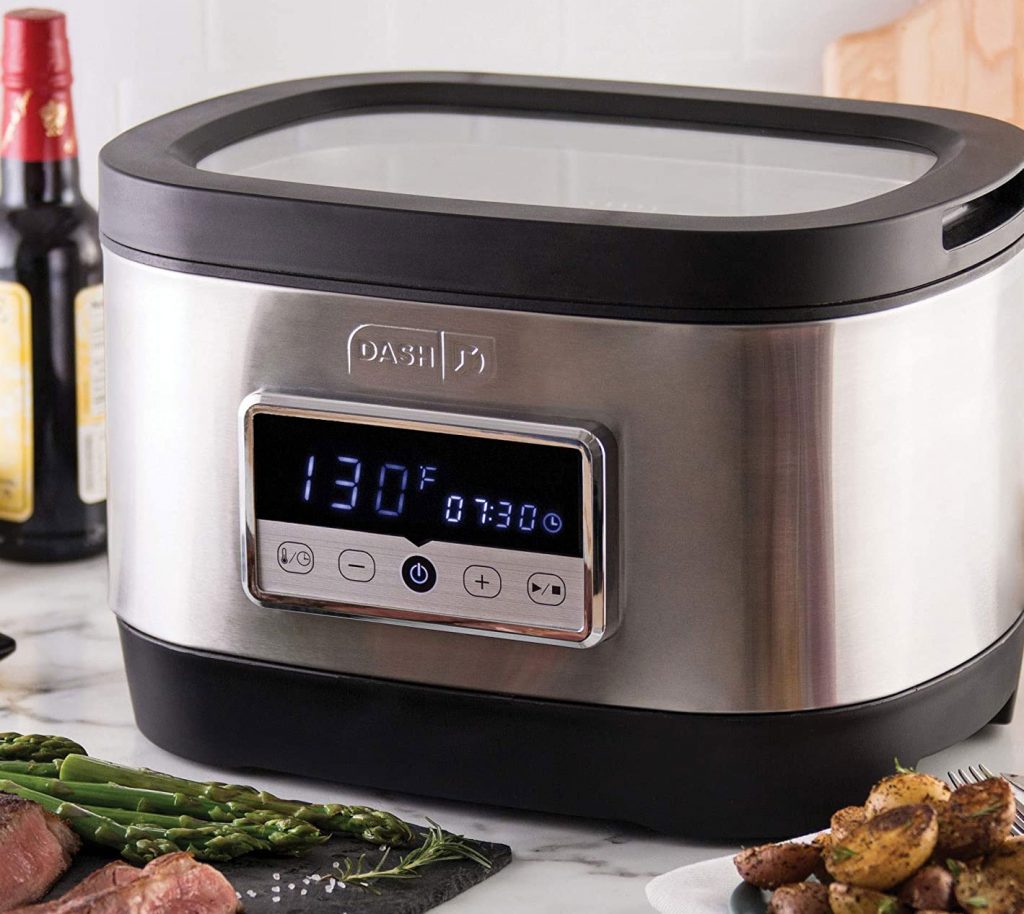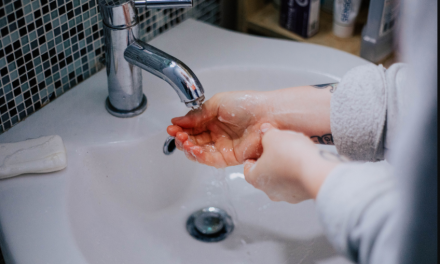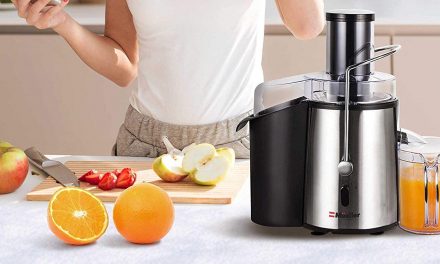Sous vide is in the same family of cooking as slow cooking and pressure cooking. They're different cooking methods, but all three share similarities—enough so that some individual cookers claim to perform two or more of these tasks in one machine. As a very precise form of cooking, sous vide has actually been a popular technique in restaurants for many years. Now, affordable tools make it possible to do in the home.
Types of sous vide machines
There are really only two big types of sous vide machine: immersion circulators and water ovens. Mostly you'll see immersion circulators, which have a few types of their own. Read on to learn more!
Immersion circulators
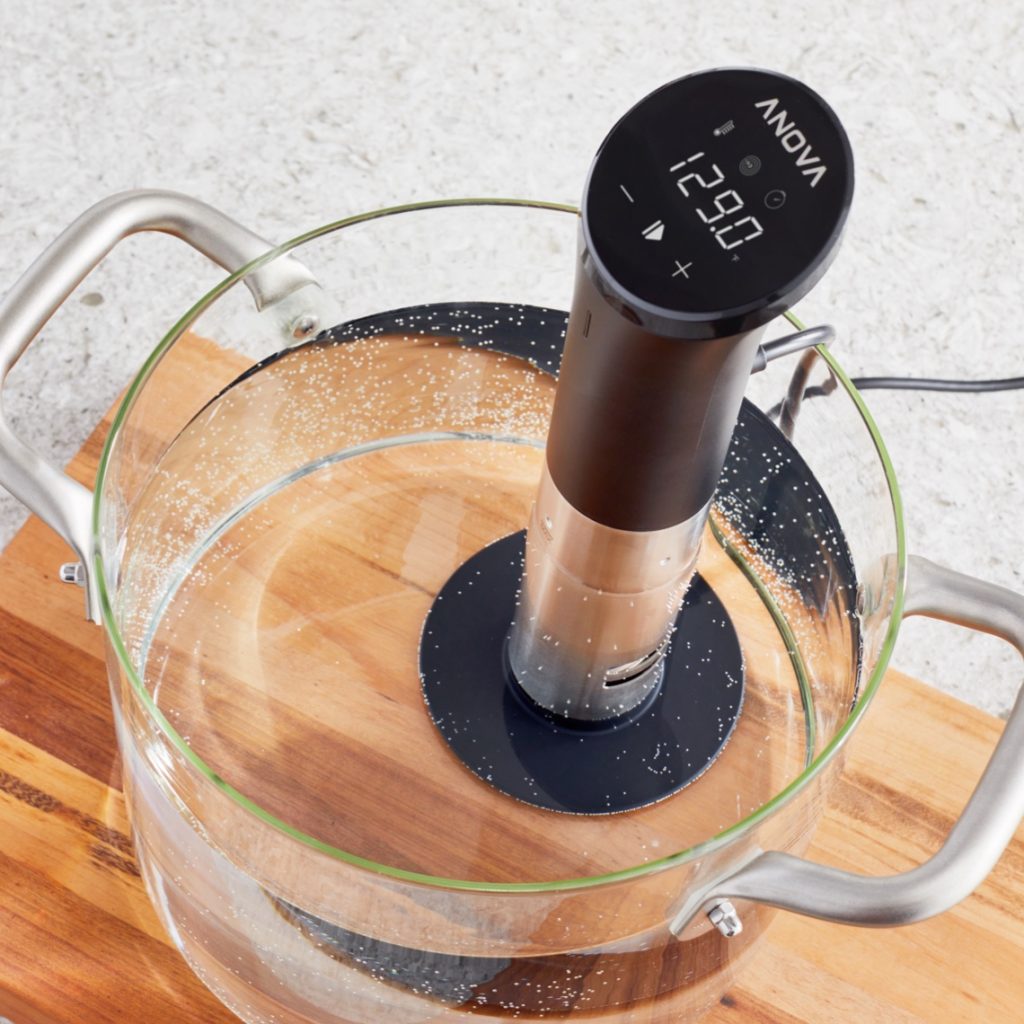
An example of an Anova Culinary immersion circulator.
Immersion circulators make up the bulk of the sous vide machines available on the market, and for good reason. These slim, stick- or rod-shaped devices may not look like machines that should be able to cook anything, but that's the beauty of them. Despite their compact size and shape, they heat water faster and more evenly than bulkier water ovens, fit into any pot or tub you might want to put water in, and they're small enough to fit in most kitchen drawers and cabinets, making them ideal for any kitchen.
After programming an immersion circulator to reach a certain temperature, it begins to circulate the water to heat it. This is similar to boiling, but much gentler. You'll never see a roiling boil because sous vide only ever reaches just under the boiling point.
There are three types of immersion circulators:
- Manual immersion circulators require you to do all programming on the device itself. This means you'll need to be available at home to start the sous vide process.
- "Smart" immersion circulators have no manual programming buttons and instead rely entirely on outside programming, usually by way of a phone app.
- Crossover immersion circulators are the best of both worlds, featuring manual programming on the device and a means of operating it at a distance using a phone app.
Immersion circulators sell for as little as $80, to as high as nearly $1,000. For the average consumer, the most affordable models on the market, usually ranging between $80 and $250, really are the best. Only professional chefs will see the benefit in expensive models.
While numerous brands have taken on the sous vide market, Breville's Joule line and Anova Culinary's sous vides are kings of the home immersion circulator market. America's Test Kitchen preferred the Joule, determining it had the most accurate temperature control mechanisms, while Anova Culinary's circulators are beloved by many well-known chefs, including YouTube's Babish.
One area of difference between brands is often in the type of circulator they're pushing. Some brands really only specialize in smart circulators that have no programming options on the device, while others focus on crossover models or purely manually-programmable devices.
| Brand(s) | Type |
|---|---|
| Breville Joule | Smart Circulators |
| Anova Culinary | Crossover Circulators |
| PolyScience, Instant Pot | Manual Circulators |
Water ovens
Water ovens, also known as countertop water baths, are boxy, self-contained machines that look a lot more like pressure cookers and slow cookers, and with good reason. These machines don't circulate water like immersion circulators do; they simply heat it. Water ovens are expensive and typically cost between $150 and $600. This is especially expensive, considering many users report uneven temperature distribution, which is the last thing you want from sous vide cooking.
Bottom line? There's a reason most consumers and test kitchens recommend immersion circulators: there's less fuss, they can handle small or large portions/containers, and they're easier to store. The one main advantage to water ovens over immersion circulators is noise. Water ovens will be completely silent, while immersion circulators tend to make a quiet humming sound.
Are all-in-one machines good for sous vide?

Some multi-cookers claim to sous vide. See Instant Pot’s Max 6-quart pressure cooker, for example.
If you're running out of space, you may be reluctant to add yet another cooking device to your overstuffed cabinets and crowded counters. Instant Pot often claims to manufacture all-in-one machines that can tackle sous vide cooking, but is that really true?
Yes and no. Multicooker machines that have a sous vide setting actually function more like water ovens. So, yes, they are sous vide machines, but they are not the kind known as immersion circulators. They will not circulate water to heat it; they use internal heating elements to distribute heat. Operating more like water ovens, they may have more heat distribution problems. In many cases, only trial and error will tell you.
If you're set on an all-in-one machine that can sous vide, most (though not all) of Instant Pot's Duo models have the function.
Note that test kitchens have not always found all-in-one machines hold temperatures well for proper sous vide cooking. When cooking meats using the sous vide function on an all-in-one machine, make sure to double-check the temperature of the meat to ensure food safety.
What "sous vide" means and how it works
Between sous vide's spelling and pronunciation (soo-veed), you might have guessed this is a French term, and you'd be right. Meaning "under vacuum," sous vide cooking goes back to the 1970s and refers to the vacuum-sealed bags you submerge in water during the cooking process. The overall technique itself, which calls for food to cook for a long time at low temperatures, is far older and goes back to 1799 and British physicist Benjamin Thompson.
Like a slow cooker, sous vide is a slow-cooking method. Like a pressure cooker, it uses low temperatures to cook. All three cooking methods and their associated devices are great at helping food retain its moisture content. Different from both, sous vide is more likely to retain full flavor profiles of food because of how it cooks food within vacuum-sealed packages.
| Method | Temperature | Speed | Good For | Risk of Overcooking |
|---|---|---|---|---|
| Sous Vide | Up to 210°F (99°C) | Slow | Meats, fish, eggs | None, but texture can be affected if foods are left too long once they’ve cooked |
| Pressure Cooker | Up to 250°F (121°C) | Fast | Meats, soups, stews, beans, yogurt | Medium |
| Slow Cooker | Up to 300°F (149°C) | Slowest | Soups, stews | High, and most food will come out soft and liquidy |
The sous vide method
As with pressure cooking and slow cooking, sous vide is a very scientific approach to food preparation. It's all about exact temperatures and cooking for certain lengths of time. These machines will cook your food to its ideal temperature, and never allow the water to become hotter, leading to perfectly tender meats and other dishes. Timing still matters for texture, though, so sous vide isn't quite the "set it and forget it" method that slow cooking can be.
There are different kinds of sous vide machines on the market, but they all work with the same principles in mind:
- Pre-seasoned and oiled (if needed) food is placed in a vacuum-sealed bag, or at least in a bag that's had air pressed out of it by hand. (Eggs are an exception. They come with their own sealed "container"!)
- The food is submerged in water.
- After programming the sous vide machine to what temperature it should reach, it begins to heat the water to that temperature, thereby cooking the food. It frequently monitors the temperature of the water to ensure it never overheats.
- For the best results, remove food shortly before or when it's reached its optimal temperature, depending on what makes the most sense for the food you're cooking.
No browning/braising is sous vide's downside
Meats are cooked to an exact temperature using sous vide, making this an ideal way to prepare a steak, pork chop, or other meat to perfection. But because there's no pan-frying, you'll not get any browned or crispy edge to your steak unless you follow your sous vide cooked meat with a quick pan sear.
While easy enough to do, this is an extra step for those who want it. Also, if you're planning to pan sear, you'll want to make sure to sous vide your meat to a slightly lower temperature than what you want it finally cooked at, to accommodate the additional cooking.
For an in-depth guide on how to sous vide and pan sear the perfect steak, check out this video from Sous Vide Everything:
The best foods to sous vide
Unlike pressure cookers, which can tackle many different kinds of meals, sous vide cooking is best suited for a few types of foods, but these are often the main dishes of a meal. Check out these cookbooks to learn how to get the most out of the sous vide method of cooking.
Sous vide starter kit
Overwhelmed by the choices? We've got you covered. For less than $300, sous vide cooking can become common in your kitchen.
- Buy an Anova Culinary immersion circulator. This is one of the best-rated sous vide machines on the market, beloved by both home users and professionals in test kitchens.
- A dedicated bath vessel with a lid is better than a pot. If you're buying the recommended Anova immersion circulator, buy a vessel with a lid made especially for it. A good one will cost $30-$80. The lid helps slow the natural evaporation of water during cooking, so you don't have to worry about dwindling water levels.
- Use a vacuum sealer. Sure, you can sous vide with Ziploc bags that you've pressed the air out of by hand, but a dedicated vacuum sealer is fast, easy to use, and reliable. It'll likely encourage you to use your new sous vide more often. We recommend Mueller's $60 vacuum sealer.
- Get a sous vide cookbook. Hugh Acheson's sous vide cookbook includes recipes for meats, sauces, fruits, and vegetables.

